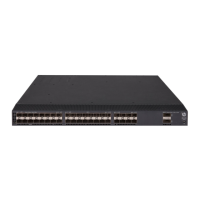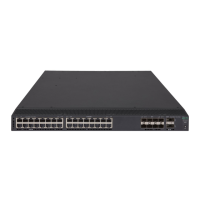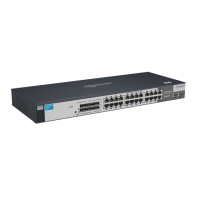21
Ste
Command
Remarks
8. (Optional.) Configure
authorization attributes for
the local user.
authorization-attribute { acl
acl-number | idle-cut minute |
user-profile profile-name | user-role
role-name | vlan vlan-id |
work-directory directory-name } *
The following default settings apply:
• FTP, SFTP, and SCP users have the
root directory of the NAS set as
the working directory. However,
the users do not have permission
to access the root directory.
• The network-operator user role is
assigned to local users that are
created by a network-admin or
level-15 user.
9. (Optional.) Configure
password control attributes
for the local user.
• Set the password aging time:
password-control aging
aging-time
• Set the minimum password
length:
password-control length length
• Configure the password
composition policy:
password-control composition
type-number type-number
[ type-length type-length ]
• Configure the password
complexity checking policy:
password-control complexity
{ same-character | user-name }
check
• Configure the maximum login
attempts and the action to take if
there is a login failure:
password-control login-attempt
login-times [ exceed { lock |
lock-time time | unlock } ]
Optional.
By default, the local user uses
password control attributes of the
user group to which the local user
belongs.
Only device management users
support the password control feature.
10. (Optional.) Assign the
local user to a user group.
group group-name
By default, a local user belongs to the
default user group system.
Configuring user group attributes
User groups simplify local user configuration and management. A user group contains a group of local
users and has a set of local user attributes. You can configure local user attributes for a user group to
implement centralized user attributes management for the local users in the group. Local user attributes
that are manageable include authorization attributes.
By default, every new local user belongs to the default user group system and has all attributes of the
group. To assign a local user to a different user group, use the group command in local user view.
To configure user group attributes:
Ste
Command
Remarks
1. Enter system view.
system-view
N/A

